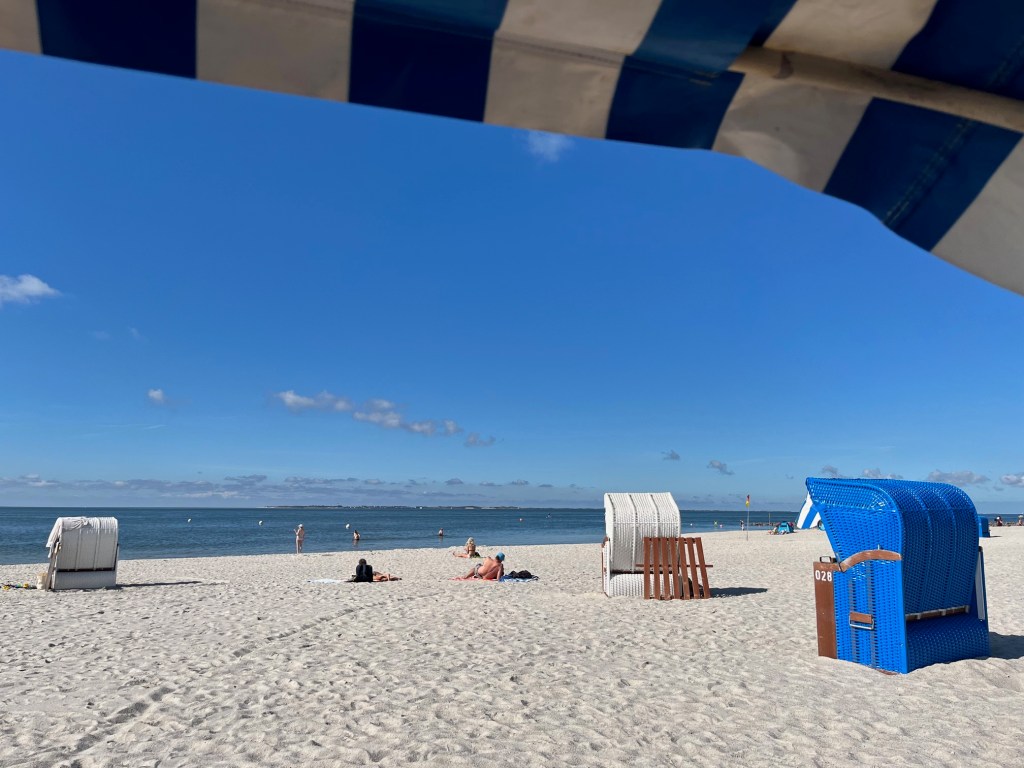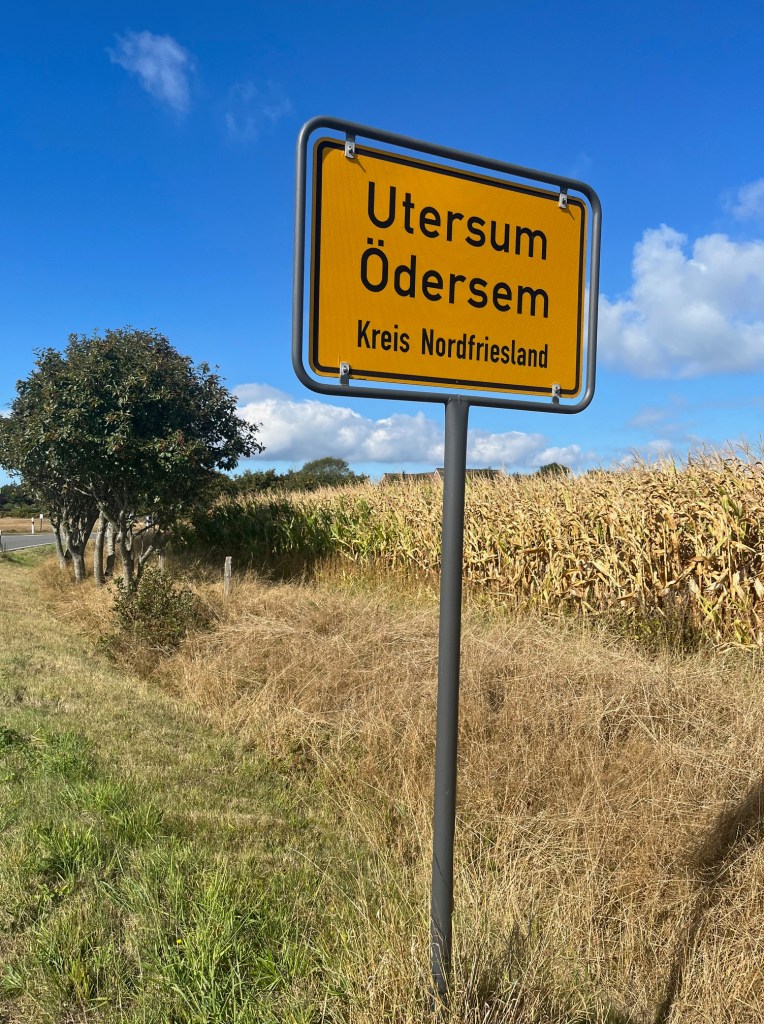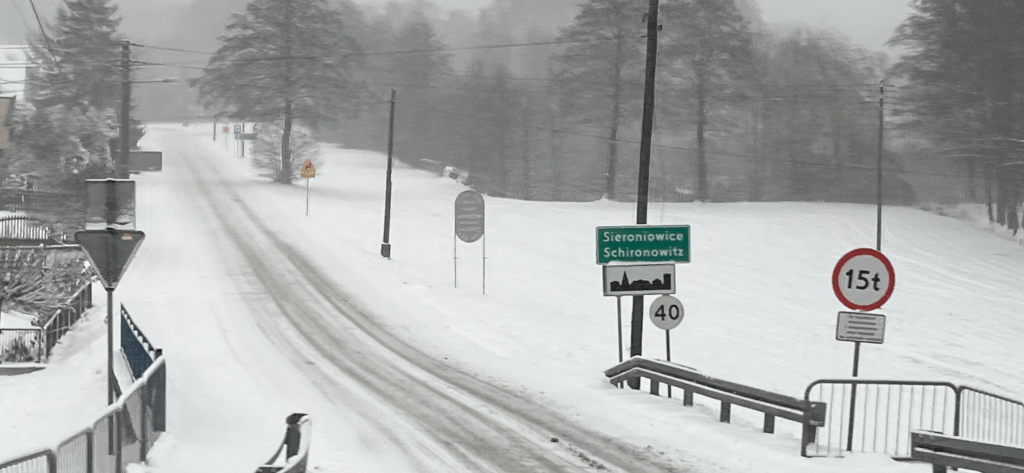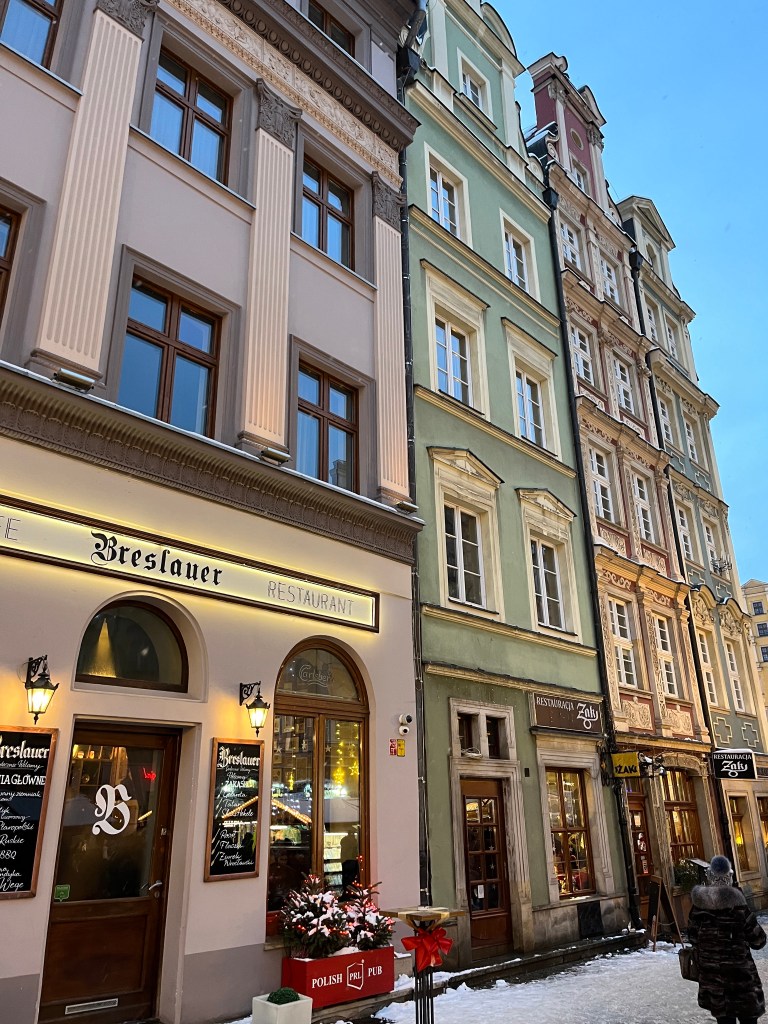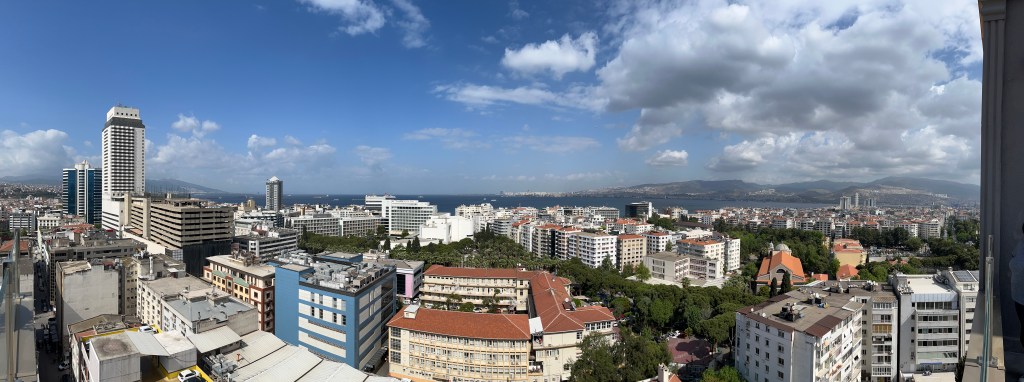
The Greek island of Lesbos is only a few miles away from Izmir. Many people there still refer to Turkey as Asia Minor. Before the population exchange in 1922, after the Greco-Turkish war, around half the city’s population were Greek. Today Izmir is a city based in Asia, but with a very European feel to it. It’s no further away than the Canaries and becoming a popular tourist destination with direct flights from many cities in Europe.
Nonetheless surprisingly many people speak nothing but Turkish. I always learn a few words of the local language because it brings a smile on people’s faces. But I wished a had learned a bit more. The car hire company was supposed to “meet and greet” us, but didn’t. When I phoned them the explanation was in broken English and pretty useless. Thankfully someone from the airline could translate and we found our way to the car and eventually to the hotel.
The breakfast buffet had a distinctly Turkish twist and I loved the savoury pastries, sausages and cheeses. In fact everywhere we ate, the food was very good. Turkish cuisine is obviously known for its kebabs, but it offers so much more. We had only excellent culinary experiences whether it was fresh fish in a harbour in Urla (about 45 minutes away by car) or Köfte (meatballs) in melted cheese in a small village eatery. So if you’re a foody Izmir is for you.
History is also big in the Izmir area. On day one I visited the ruins of ancient Smyrna as the city was known in Greek. Humans have settled here for 8500 years. The Persian empire and others had control of the area in the past, but most the historical ruins that can be seen today are from Hellenistic, Roman, Byzantine and Ottoman times. The buildings around the old agora, the marketplace, are in ruins and bits of columns etc. are piled up in heaps. However work has started to re-erect some pillars and arcs where it was possible to make use of the original pieces. Where necessary new parts have been added to make the pillar whole and these new parts are clearly identifiable, but fit well into the ensemble. At the top of the hill, Mount Pagos, sits the ruined Kadifekale Castle which was founded in the 4th century BC, but visiting it seems to be a safety issue and I decided to enjoy it from down below.
A short stroll away is the Kemeralti open air market which offers a wide variety of products: the proverbial Turkish bazaar. Vendors are eager, but friendly and not too intrusive. I have also not once felt that I was being taken advantage of as a tourist. A little further along I reach the large and inviting Konak Square with its iconic watch tower in the middle. A little over to one side is a tiny mosque which a friendly man invites me to visit. I make my way along the seafront towards Alsancak, a pleasant quarter with many cafés. Some charming narrow streets with houses from the Greek era remain.

In the afternoon I go for a walk through the nearby Kültürpark with its varied offering of a greenery, sports facilities and entertainment. After this we were ready for a swim in the sea. Sadly Izmir doesn’t have a beach and while the nearest one is in Urla it was full of plastic rubbish: a sad sight. But a little further along is Çeşme. The water is turquoise and even in April swimming in the sea is totally possible. Çeşme is overlooked by its castle which was initially built by the Genoese who had colony here. Today it’s rather touristy, but not unpleasant and only an hour away from Izmir.
About an hour north of the city is Bergama, known as Pergamon in ancient times. It’s amphitheatre is impressive. We follow a group of Russian tourists who can still visit Turkey more easily than many places in Europe. The famous Pergamon altar now stands in Berlin where an amazing new installation gives a 360-degree panorama of what the metropolis might have a looked like at its peak in the 2nd century AD.
Even more impressive is the ancient city of Ephesus near the modern town of Selçuk. Again some reconstruction has taken place here and when you walk down the main street towards the Library of Celsus you can’t help but being in awe. Make sure you budget for the hefty entrance fee of 40 Euros (ca. £35) and take some water with you.

In Selçuk itself is the (empty) grave of St John, Jesus’ beloved apostle. It is inside the ruins of a basilica built by the Eastern Roman emperor Justinian I. For those interested in Christian history this area really is an alternative at a time when the security situation in parts of the Middle East makes visits there challenging. I didn’t realise how interconnected places like Ephesus and Jerusalem must have been back then. But when Christians started to be persecuted in the Holy Land St John settled here. There is also a theory that he took Mary, the mother of Jesus, with him and the following Bible passage is often quoted: “So when Jesus looked down and saw the disciple he loved standing with her, he said, ‘Mother, look—John will be a son to you.’ Then he said, ‘John, look—she will be a mother to you!’ From that day on, John accepted Mary into his home as one of his own family” (John 19:25-27).
Indeed a few miles out of town there is place on which Mary is said to have spent her last years. It was found in the 19th century after the reported visions of a German nun, describing it in detail. She was bedridden and therefore unable to travel, yet her descriptions accurately match the site. There is a foundation from the 1st century AD, but the little church is from the 5th century. I thought it was interesting that the person who found the place was a priest from Smyrna who had set out to prove that it didn’t exist. The Catholic Church hasn’t pronounced itself on the site, but various Popes have visited it. The water from the well is said to have healing powers.






